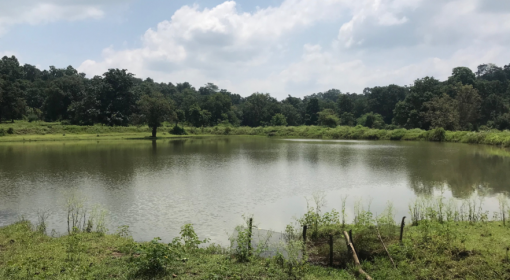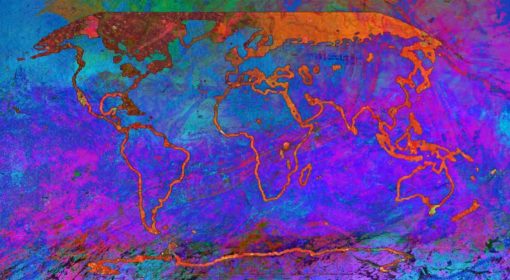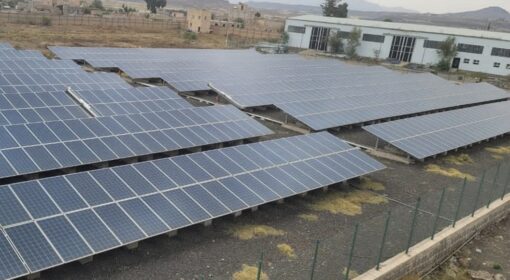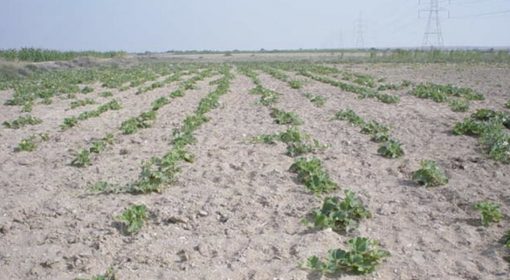by Dr. Helmut Eigenmann,
Thin Waters/ Laboratory and Design
My experiments with thin water layers and light are the base for my work in the areas of design, art, events, relaxation, science museums. They are linked to what happens after a rain drop has fallen: as source of inspiration but also as physical behaviour of small water quantities on solid surfaces. For instance, the sequence of photos of light projections of water wave’s pattern concerns waves which are formed on a water film of aprox. 0.5 mm. depth. Consequently, similar waves can be generated by the wind on very thin layers of rain water (puddles).
My know-how is the modification (surface treatments) of the physical properties of the solid surfaces for obtaining, in association with light, a desired visual water pattern.
Ancient Chinese wisdom says:
“After the rain, thousands walk along the river / Climb the mountain forest and find every single drop!”
(attributed to Lao-Tse)
“After the rain, thousands walk along the river / Climb the mountain forest and find every single drop!”
(attributed to Lao-Tse)
The initial phase of every great process concerning the natural environment is always determining the way the process evolves and influences the environment itself.
Rain drops have fallen: tiny water quantities begin their path on the earth’s surfaces.
Water is sliding on leaves, water is dripping from stone to stone, an infinite multitude of thin threads of flowing water join and generate small streamlets, the first small puddles are formed and life begins in water.
Each of these phenomena only involves a little quantity of water which is in contact with a solid surface. It creates a temporary micro ecosystem which modifies the environment and increases bio-diversity. It is of primary importance for the accumulation process of water, which will lead further down to the formation of the first small stream, then the torrent, then the river.
Concerning the physical aspects, the laws of hydrodynamics don’t yet play the role they will play later, with larger masses of water. More important are water’s surface tension and the physical relationship between water and the surface properties of the wet solid surfaces: critical surface tension, wettability, hydrophilic or hydrophobic properties and capillarity. Obviously associated with other physical properties such as shape, inclination etc.
Following are some examples of Dr. Eigenmann’s work. For more, visit www.helmuteigenmann.ch
Water drops are formed from water films wetting the lower face of solid elements. The patterns of the drops and of the water films are determined by the shape and surface properties of the solid elements and by the flow rate, which is extremely low. The drops are illuminated by a spot light placed on the opposite side, with respect to the observer. | 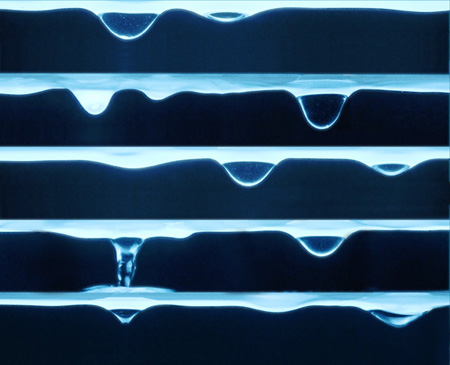 |
Water drops are formed from a water film. The main difference with respect to the previous picture is a slightly higher flow rate and the way to illuminate the drops, which in this case is a light source with a large emitting surface. | 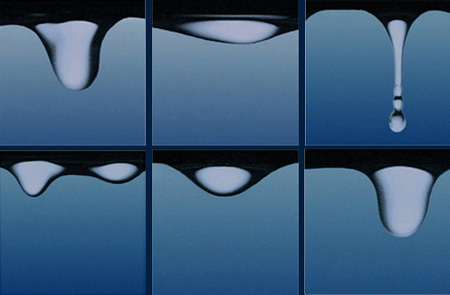 |
Water waves are generated in a water basin, by means of wave generators. The waves move on a mirror surface and are illuminated with a projection unit. The images of the waves are seen on a screen. Critical factors for obtaining visually attractive patterns are the system for generating the waves, the shape and surface properties of the mirror surface and the optical properties of the projection unit. The technical set-up is shown here. |  |
| Water penetrates between a glass plate and a transparent plastic film which was adhering on the glass surface. Light projection on a screen. | 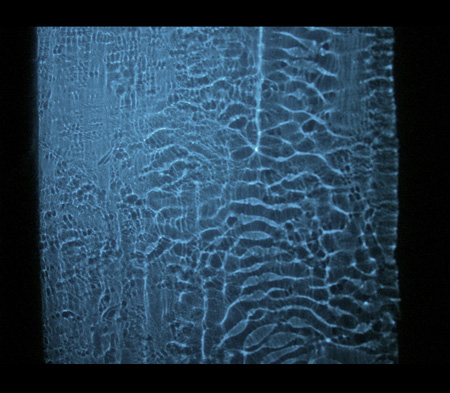 |
{jcomments on}
